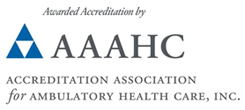Pitcher’s elbow, also known as medial epicondyle apophysitis, is a common overuse injury that affects young athletes, especially those who play baseball or other throwing sports. It occurs when repetitive throwing motions place excessive stress on the growth plate located on the inner part of the elbow. This area is where tendons attach to the bone and is particularly vulnerable in children and adolescents whose bones are still developing. The repeated forceful motion of throwing can cause inflammation, microtrauma, or even small fractures in this
growth plate, leading to pain and decreased performance.
Athletes with pitcher’s elbow often experience pain on the inside of the elbow, especially during or after throwing. There may also be swelling, stiffness, or a noticeable decrease in throwing speed or accuracy. In some cases, the pain may radiate down the forearm or worsen with gripping activities. The condition is commonly seen during periods of growth or when training intensity increases. Without proper attention, it can interfere with development and potentially cause long-term damage to the elbow’s structure and function.







